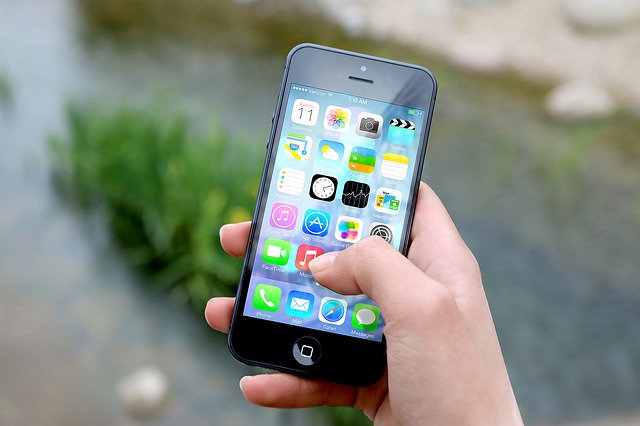Will Apple Expand Into Smart Speaker Services?

Last quarter Apple (Nasdaq: AAPL) announced plans to bring overseas cash stock back into the country in view of the change in the tax code. This quarter, it announced a record share repurchase plan to utilize some of that cash. This begs the question whether the incentives to allow corporations to bring overseas cash back in is producing actual investment or is it all going into the pockets of the already wealthy shareholders.
Apple’s Financials
Apple’s second quarter revenues grew 16% over the year to $61.1 billion, marginally shy of the Street’s forecast of $61.15 billion. EPS of $2.73 was better than the market’s expected earnings of $2.69 for the quarter.
By segment, Apple’s iPhone revenues grew 14% over the year to $38 billion driven by a 3% growth in iPhone sales. Overall, the company sold 52.22 million iPhones, falling short of the Street’s estimated sales of 53 million units. The average selling prices for iPhones grew 10% over the year to $728, suggesting a growing share of the $999 priced iPhone X. The market was looking for the average selling price to grow to $742. Analysts are worried that the high price of the iPhone X has hurt the demand for the phone. But Apple is not very worried. According to the management, iPhone X remained the most popular iPhone model every week in the March quarter.
iPad revenues grew 6% to $4.11 billion, driven by a 2% increase in units sold. Mac revenues were flat for the year at $5.85 billion despite a 3% reduction in units sold. Its services segment grew 31% to $9.2 billion, compared with the Street’s forecast of $8.4 billion. Revenues from other products grew 38% to $4 billion.
By region, Apple’s revenues from the Americas grew 17% over the year to $24.8 billion and sales from Europe grew 9% to $13.8 billion. Greater China region continued to drive strong growth and reported a 21% improvement to $13 billion. This was the best growth that China has ever seen in the region in the last ten quarters. Revenues from Japan also increased 22% to $5.5 billion. Revenues from the rest of Asia Pacific improved 4% to $4 billion.
Apple announced that its board has approved a new $100 billion share-repurchase plan, and it raised the quarterly dividend by 16% to 73 cents. In the last six months, Apple has bought back $33.6 billion in stock – compared with the $33 billion worth of stock it repurchased in fiscal 2017.
For the current quarter, Apple forecast revenues of $51.5-$53.5 billion, and gross profit margin of 38% to 38.5%. The market was looking for revenues of $51.54 billion.
Apple’s Services Segment
iPhone sales still define Apple’s performance for the quarter. But Apple is trying hard to get the market to analyze the performance of its other rapidly growing segment – Services. The services segment includes all the digital products it offers, including Apple Music subscriptions, apps, games, and movies. For the fifth consecutive quarter, this quarter, the segment recorded growth. With $9.2 billion in quarterly revenues, it qualifies to become a Fortune 100 company on its own. Last year, Apple had announced that it planned to double software and services revenues by 2020.
To help achieve this target, Apple has been expanding its reach in original content. It recently acquired a magazine subscription app Texture. Texture is a virtual newsstand for magazine that is known as the “Netflix of magazine publishing”. The service, formerly known as Next Issue Media, allows users to digitally access its library of over 200 magazines for a monthly subscription fee of $9.99. Its apps are available for iOS, Android, Kindle, Fire and Windows based devices. Terms of the deal were not disclosed. Prior to the acquisition, Texture had raised $90 million in funding from investors including KKR, Condé Nast, Hearst, Meredith, News Corp., Rogers Communications, and Time Inc. Its user base and detailed financials are not known. Analysts estimate that the service had “several hundreds of thousands” users for its service.
I think Apple needs to focus on improving its smart-home services. Amazon has been in the space for a while with its Echo service. Alphabet has also made its presence felt in the market with Google Home. Both Alphabet and Amazon have stepped up efforts within the smart-connected-home space through acquisitions. Amazon recently announced the $1 billion acquisition of Ring, and Alphabet had acquired Nest earlier on. Amazon’s Echo houses Alexa and Google Home relies on Google Assistant. Earlier this year, Apple entered the smart speaker market with the launch of HomePod, that is powered by Siri. But while Siri may have been among the first few voice assistants, it is losing its race to Alexa and Google Assistant as both Echo and Google Home establish a bigger footprint in the homes.
According to Loup Ventures, in 2018, Apple will account for 18% of the smart speaker market share. By 2022, when tables may have turned between Amazon and Alphabet, Apple’s share is expected to remain constant at 12%. Perhaps it could use some of its repatriated cash to purchase a player within this space.
(Click on image to enlarge)

Meanwhile, Apple’s stock is trading at $169.10 with a market capitalization of $858 billion. It had peaked to a record high of $183.50 in January this year. It has recovered from the year low of $142.20 that it was trading at in June last year.
(Click on image to enlarge)
Sramana Mitra is the founder of One Million by One Million (1M/1M), a global virtual incubator that aims to help one million entrepreneurs ...
more


